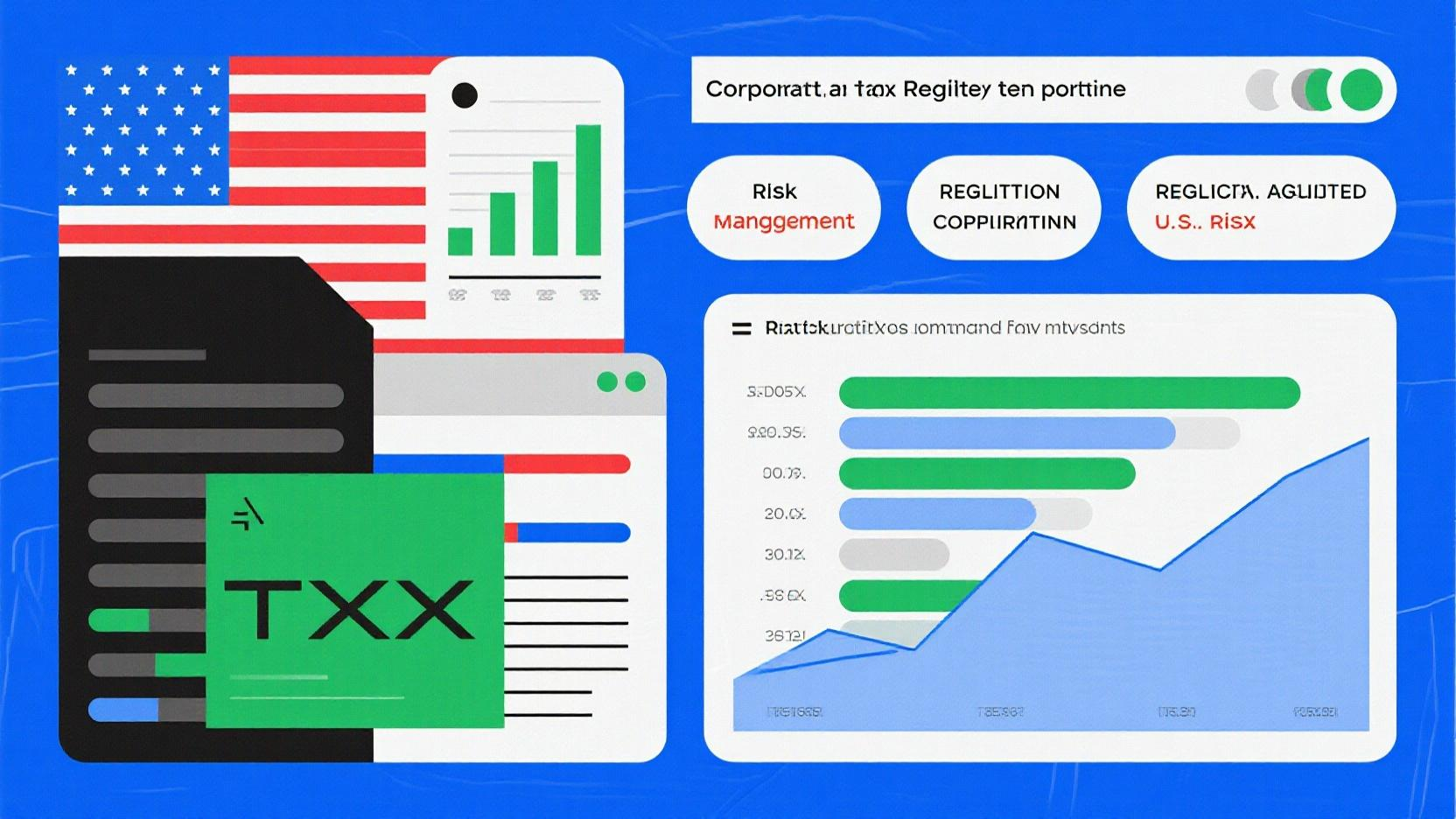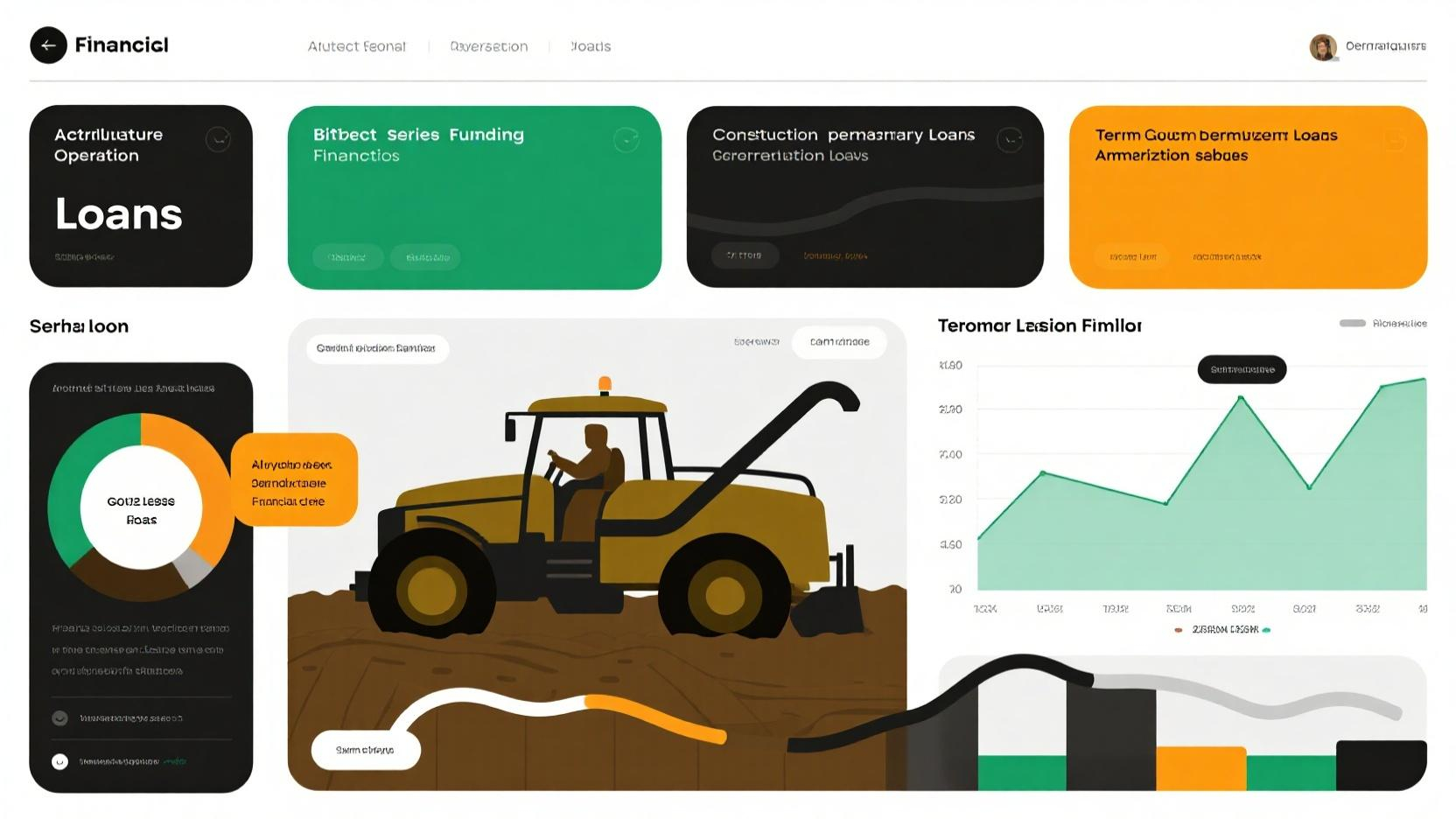Image Source: pexels
Technology and market shifts are transforming how businesses secure financing. You now have access to tools that simplify funding processes and open new opportunities. These innovations reduce barriers, making financing more inclusive and efficient. Staying informed about these changes helps you adapt and maintain a competitive edge. By embracing these advancements, you position your business to thrive in a rapidly evolving financial landscape. Future trends in business financing: technological innovations and market transformations are not just concepts—they are reshaping the way you grow and succeed.
Key Takeaways
- Use technology to make financing easier. Online tools help businesses get funds quickly and easily.
- Use AI to make better money choices. AI can improve credit checks and manage risks, speeding up loan approvals.
- Try new ways to get money, like crowdfunding or revenue-based funding. These let you keep control of your business while getting cash.
- Learn about new ideas like decentralized finance (DeFi) and ESG investing. These bring chances to grow and match what today’s investors want.
- Plan for a tech-friendly money strategy. Use smart money tools and work with fintech companies to stay ahead in business.
Current Business Financing Landscape
Traditional Financing Models
Bank Loans and Venture Capital
Bank loans and venture capital have long been the backbone of business financing. Banks provide loans based on creditworthiness, offering structured repayment plans. Venture capital, on the other hand, supports startups and high-growth companies in exchange for equity. While these models offer significant funding, they often require businesses to meet strict eligibility criteria. This can make them less accessible to smaller enterprises or those without a proven track record.
Private Equity and Credit Lines
Private equity firms invest in businesses by purchasing shares, often focusing on companies with high growth potential. This funding model provides substantial capital but may involve giving up some control over business decisions. Credit lines, offered by banks or financial institutions, allow businesses to borrow funds as needed. These are flexible but often come with high-interest rates, making them a costly option for many.
Challenges in Traditional Financing
Limited Accessibility for Small Businesses
Small businesses face numerous obstacles when seeking traditional financing:
- Many rely on personal savings or support from friends and family during their early stages.
- Inadequate credit history and lack of collateral often disqualify them from loans.
- Complex application processes discourage entrepreneurs from pursuing funding.
- Rural and minority business owners encounter additional barriers, such as lower liquid wealth and fewer lending options due to the decline of small banks.
In 2022, Black and Hispanic small business owners had significantly less liquid wealth than their white counterparts. This disparity limits their ability to secure funding, especially since 75% of small business owners use personal funds to start their ventures.
High Costs and Bureaucratic Hurdles
Traditional financing often involves high costs, including interest rates and fees. The bureaucratic processes can be time-consuming, requiring extensive documentation and multiple approvals. These hurdles make it difficult for businesses to access funds quickly, especially in urgent situations.
The Role of Technology in Bridging Gaps
Digital Platforms for Streamlined Access
Digital platforms are revolutionizing how businesses access financing. They simplify the application process, making it faster and more efficient. These platforms address the $2 trillion financing gap for micro, small, and medium enterprises (MSMEs) in low- and middle-income countries. By offering credit through digital channels, they help underserved groups gain access to much-needed funds. For example, in Uganda, digital disbursement of microfinance loans increased business profits for female entrepreneurs by 15%.
Data-Driven Financial Decision-Making
Technology enables businesses to make smarter financial decisions using data analytics. By analyzing financial trends and customer behavior, you can identify opportunities and risks more effectively. This data-driven approach not only improves decision-making but also enhances your ability to secure funding by presenting a clear financial picture to potential lenders.
Technological Innovations Shaping Business Financing
Artificial Intelligence (AI) in Finance
AI-Driven Credit Scoring and Risk Management
AI is transforming credit scoring and risk management by analyzing vast datasets in real-time. This technology evaluates multiple data points, providing faster and more accurate risk assessments. For example:
| Benefit | Description |
|---|---|
| Speed | AI processes large datasets instantly, enabling quicker decision-making compared to traditional methods. |
| Accuracy | It identifies patterns in data that human analysts might miss, improving predictions of defaults. |
| Fraud Detection | Real-time analysis detects suspicious activities promptly, reducing financial losses. |
AI also enables real-time monitoring of credit risk, allowing you to take timely actions. By offering personalized credit solutions, it enhances customer satisfaction and loyalty, ultimately improving financial outcomes.
Personalized Financial Solutions for Businesses
AI tailors financial products to meet your specific needs. It analyzes your business data to recommend customized funding options, helping you make informed decisions. This personalization not only simplifies the financing process but also builds stronger relationships with financial institutions.
Blockchain and Smart Contracts
Enhancing Transaction Transparency and Security
Blockchain technology ensures transparency and security in financial transactions. Each transaction is encrypted and added to an immutable ledger, creating a tamper-proof record. Key benefits include:
- Distributed control eliminates intermediaries, reducing costs.
- Time-stamped records enhance transparency and reduce fraud.
- End-to-end encryption prevents unauthorized access and ensures data privacy.
The decentralized nature of blockchain also creates a trustless network, where participants can operate without relying on individual entities.
Revolutionizing Cross-Border Payments
Smart contracts, powered by blockchain, are revolutionizing international payments. They enable instantaneous, low-cost transfers by eliminating intermediaries. This reduces delays and regulatory overhead, making cross-border transactions more efficient. For businesses operating globally, this innovation simplifies financial operations and reduces costs.
Cloud Computing and Big Data
Real-Time Financial Analytics
Cloud computing provides advanced tools for real-time financial analytics. It allows you to analyze market trends and customer behavior instantly, improving decision-making. Key advantages include:
- Scalability: Adjust resources dynamically based on demand.
- Cost Efficiency: Pay-as-you-go models reduce capital expenditures.
- Advanced Analytics: Access complex data insights without heavy IT investments.
These capabilities help you stay competitive in a fast-paced financial environment.
Scalable Solutions for Growing Enterprises
Big data technologies, such as data lakes and distributed systems, offer scalable solutions for growing businesses. They handle large volumes of unstructured data and support real-time analytics. Cloud storage further enhances scalability, allowing you to expand operations without significant hardware investments. This flexibility ensures your business can adapt to increasing demands efficiently.
Fintech and Automation
Peer-to-Peer Lending and Crowdfunding Platforms
Fintech innovations have transformed how businesses access funding. Peer-to-peer (P2P) lending platforms connect borrowers directly with individual lenders. These platforms eliminate traditional intermediaries, reducing costs and simplifying the borrowing process. You can secure loans faster and often at lower interest rates compared to banks. P2P lending also provides opportunities for small businesses that struggle with traditional financing due to limited credit history.
Crowdfunding platforms offer another powerful tool for raising capital. They allow you to pitch your business idea to a global audience, attracting contributions from individuals who believe in your vision. Equity crowdfunding, for example, enables you to exchange shares for funding, creating a community of investors who support your growth. These platforms democratize financing, making it accessible to startups and small enterprises that previously faced barriers.
Automating Financial Processes for Efficiency
Automation is revolutionizing financial operations by streamlining workflows and reducing inefficiencies. It eliminates repetitive tasks, allowing you to focus on strategic activities. For example, automated systems accelerate loan approvals, reducing processing times from days to seconds. This speed helps you secure funding when you need it most.
Automation also improves fraud detection. Advanced algorithms analyze transactions in real-time, identifying suspicious activities and enhancing identity verification. This reduces risks and protects your business from financial losses.
The table below highlights key contributions of fintech automation to business financing:
| Contribution | Description |
|---|---|
| Fraud reduction | Automation helps in detecting fraud through AI and ML, improving identity verification processes. |
| Reduction in internal operating costs | Process automation eliminates redundancies and labor wastage, leading to cost savings. |
| Improving operational efficiency | Automation cuts out inefficiencies by removing repetitive tasks from workflows. |
| Accelerating loan and credit approval | Automation speeds up loan approvals to seconds, contrasting with traditional methods that take days. |
By adopting automation, you can reduce costs, improve efficiency, and enhance security. These advancements position your business for sustainable growth in a competitive market.
Market Transformations and Emerging Trends

Image Source: pexels
Decentralized Finance (DeFi)
Tokenized Assets and Peer-to-Peer Lending
Decentralized finance (DeFi) is reshaping the financial landscape by removing centralized intermediaries like banks. It uses blockchain technology and smart contracts to enable peer-to-peer transactions. Unlike traditional finance, DeFi offers global access to financial services, simplifies processes by eliminating middlemen, and fosters transparency.
Tokenized assets play a pivotal role in DeFi. They allow fractional ownership, making traditionally illiquid assets, such as real estate, more accessible. This enhances liquidity and enables global participation. Blockchain technology ensures transparency and security by maintaining an immutable record of transactions. Additionally, tokenization reduces transaction costs and automates compliance, making financial operations more efficient.
Eliminating Intermediaries in Financial Transactions
DeFi eliminates intermediaries, reducing costs and delays in financial transactions. Smart contracts execute agreements automatically when conditions are met, ensuring faster and more secure processes. This innovation empowers you to access financial services directly, bypassing traditional gatekeepers. By leveraging DeFi, you can enjoy a more inclusive and efficient financial ecosystem.
Alternative Financing Models
Revenue-Based Financing for Startups
Revenue-based financing (RBF) offers a flexible alternative to traditional equity models. Unlike venture capital, RBF allows you to retain full ownership of your business. It does not accrue interest, providing a straightforward repayment structure. RBF aligns with your business growth, as repayments are tied to revenue, ensuring you are not burdened during slower periods. Additionally, RBF funding is faster, often accessible within weeks, and preserves your decision-making authority. This model is particularly beneficial for startups seeking affordable and growth-friendly financing options.
Equity Crowdfunding and Community Investments
Equity crowdfunding enables you to raise capital by offering shares to a broad audience. This approach builds a community of investors who believe in your vision. It democratizes financing, making it accessible to businesses that may struggle with traditional funding. Community investments foster stronger connections between businesses and their supporters, creating a sense of shared success.
ESG (Environmental, Social, Governance) Financing
The Rise of Sustainable Investment Demand
Sustainable investing has gained momentum in recent years. A 2021 survey revealed that most ESG investors began prioritizing these practices within the last five years. Millennials, in particular, show a strong preference for ESG investments, reflecting a shift in demographic priorities. The sustainable finance sector is projected to reach $34 trillion in global ESG assets under management by 2026. This growth highlights the increasing importance of aligning financial goals with environmental and social impact.
Implications for Business Financing Strategies
ESG financing encourages businesses to adopt sustainable practices. Transition finance, such as sustainability-linked bonds, helps companies secure funding by achieving specific ESG milestones. This approach bridges the gap between sustainability goals and financial realities. By integrating ESG principles into your financing strategy, you can attract investors who prioritize long-term impact alongside financial returns.
Globalization and Cross-Border Financing
Opportunities in Emerging Markets
Emerging markets present exciting opportunities for businesses seeking cross-border financing. These regions allow you to expand your customer base and explore innovative use cases for your products or services. Key areas like Latin America, West Africa, and Southeast Asia still hold untapped growth potential. Investors often view activity in these markets as a sign of future success, which can drive interest in your business.
By entering these markets, you can:
- Reach new customers and diversify revenue streams.
- Leverage local demand for innovative solutions.
- Attract investors who prioritize high-growth regions.
Expanding into emerging markets not only boosts your financial prospects but also positions your business as a global player. This strategy helps you stay competitive in an increasingly interconnected world.
Navigating Regulatory Challenges
Operating across borders comes with its own set of challenges. You must navigate complex regulatory frameworks that vary from one country to another. Ensuring compliance with diverse regulations is essential to avoid legal and financial risks.
Some common hurdles include:
- Understanding and adhering to local laws.
- Maintaining cybersecurity to protect sensitive data.
- Managing vendor compliance across multiple jurisdictions.
- Handling extensive documentation and reporting requirements.
To overcome these challenges, you need a proactive approach. Invest in legal expertise to understand local regulations. Use technology to streamline compliance processes and enhance data security. By addressing these issues effectively, you can unlock the full potential of cross-border financing while minimizing risks.
Real-World Applications and Case Studies
AI in Business Financing
Case Study: AI-Driven Lending Platforms
AI-driven lending platforms are transforming how businesses access financing. These platforms analyze vast datasets to assess creditworthiness, enabling faster and more accurate loan approvals. For example, companies like Upstart use AI to evaluate non-traditional data points, such as education and employment history, to provide loans to underserved groups. This approach increases inclusivity and reduces bias in lending decisions.
Early adopters of AI-driven lending platforms have gained significant advantages. The following table highlights the lessons learned:
| Aspect | Details |
|---|---|
| Pros | Gain competitive advantage, influence AI development, and improve efficiency. |
| Cons | May face significant integration challenges and higher costs. |
| Impact | Insights help refine AI technologies, making them more accessible and reliable for the next wave of users. |
| Example | Tesla’s use of AI for self-driving cars positions them as a leader in innovation despite challenges. |
By embracing AI, you can streamline financial processes and position your business as a leader in innovation.
Lessons from Early Adopters
You can learn valuable lessons from businesses that adopted AI early. They demonstrate the importance of balancing innovation with practical challenges. While AI offers efficiency and competitive advantages, integration costs and technical hurdles require careful planning. Early adopters also show how refining AI systems can benefit future users, making the technology more reliable and accessible.
Blockchain in Financial Transactions
Case Study: Blockchain in Supply Chain Financing
Blockchain technology has revolutionized supply chain financing by creating a transparent and immutable ledger. This innovation ensures real-time access to transaction data, reducing inaccuracies and delays. For example, companies use blockchain to track payments and expenses across supply chains, streamlining operations and improving cash flow.
The introduction of blockchain technology can help eliminate issues of misinformation in supply chain finance. All participants in a blockchain network have access to a distributed copy of the same ledger, ensuring truthfulness and credibility within the network.
This transparency fosters trust among stakeholders and enhances the efficiency of financial operations.
Benefits for SMEs
Blockchain offers several benefits for small and medium-sized enterprises (SMEs):
- Enhanced Security: Protects data with advanced cryptography, reducing fraud risks.
- Improved Efficiency: Automates processes, speeding up transactions.
- Reduced Costs: Eliminates third-party verifications, lowering operational expenses.
- Increased Transparency: Maintains a clear and accessible ledger for all stakeholders.
- Faster Payments: Facilitates quicker cross-border transactions, improving cash flow.
By leveraging blockchain, you can access financial resources previously limited to larger companies, leveling the playing field.
Alternative Financing Success Stories
Case Study: Revenue-Based Financing for Startups
Revenue-based financing (RBF) has emerged as a flexible funding option for startups. Unlike traditional loans, RBF ties repayments to your revenue, ensuring manageable payments during slower periods. For example, a SaaS startup used RBF to scale operations without giving up equity. This approach allowed the company to retain full ownership while accessing growth capital quickly.
RBF provides a straightforward repayment structure and aligns with your business performance, making it an attractive alternative to venture capital.
Crowdfunding as a Growth Enabler
Crowdfunding platforms have empowered businesses to raise capital by engaging directly with their audience. Platforms like Kickstarter and Indiegogo allow you to pitch your ideas to a global community, attracting contributions from individuals who believe in your vision. Equity crowdfunding takes this a step further by enabling you to offer shares in exchange for funding.
This model not only democratizes financing but also builds a loyal community of supporters. By leveraging crowdfunding, you can secure funding while fostering a sense of shared success with your investors.
Challenges and Opportunities in Adopting Future Trends
Challenges in Technology Adoption
High Initial Costs and Learning Curves
Adopting new technologies often requires significant upfront investment. You may need to purchase advanced software, upgrade hardware, or hire specialized talent. These costs can strain your budget, especially if you run a small or medium-sized business. Additionally, learning curves can slow down adoption. Employees may need training to use new tools effectively, which takes time and resources. Without proper planning, these challenges can delay your ability to benefit from technological advancements.
Regulatory and Compliance Barriers
Navigating regulatory requirements can be another hurdle. Financial technologies often operate in a complex legal environment. You must ensure compliance with data protection laws, anti-money laundering regulations, and industry-specific standards. Non-compliance can lead to penalties or reputational damage. Staying updated on evolving regulations and investing in legal expertise can help you overcome these barriers.
Opportunities for Competitive Advantage
Leveraging Technology for Strategic Decision-Making
Technology offers tools that enhance your decision-making process. Real-time analytics and predictive models allow you to identify trends and make informed choices. For example, AI-driven insights can help you optimize cash flow or assess market opportunities. By integrating these tools into your strategy, you can gain a competitive edge and respond quickly to changes in the financial landscape.
Expanding Access to Global Markets
Technological advancements also open doors to global markets. Digital platforms and blockchain solutions simplify cross-border transactions, making it easier for you to reach international customers. Emerging markets, in particular, offer untapped potential for growth. By leveraging these opportunities, you can diversify your revenue streams and position your business as a global player.
Preparing for the Future of Business Financing
Building a Tech-Ready Financial Strategy
To prepare for the future, you need a robust financial strategy. Start by building a comprehensive financial plan that aligns with your business goals. Implement strong financial management systems to track performance and focus on cash flow management to ensure stability. Diversify your funding sources to reduce dependency on any single option. Investing in financial talent and expertise will further strengthen your strategy.
Collaborating with Fintech Innovators
Partnering with fintech companies can accelerate your adoption of new technologies. These innovators offer solutions tailored to modern financial challenges, such as automation and digital lending platforms. Collaboration allows you to access cutting-edge tools without developing them in-house. By working with fintech partners, you can stay ahead of the curve and adapt to the evolving financial ecosystem.
Tip: Integrating technology and fostering collaboration within your organization can help you navigate future challenges more effectively.
Technological innovations and market transformations are redefining how you approach business financing. Tools like AI, blockchain, and fintech platforms simplify processes, making funding more accessible and efficient. To thrive, you must embrace these advancements and adapt your strategies. Focus on building a tech-ready financial plan and exploring alternative financing models. Emerging trends, such as decentralized finance and ESG investments, offer exciting opportunities for growth. Staying informed about future trends in business financing: technological innovations and market transformations ensures you remain competitive. Take proactive steps today to secure your place in tomorrow’s financial landscape.
FAQ
1. What is the biggest advantage of using AI in business financing?
AI helps you make faster and more accurate financial decisions. It analyzes large datasets in real-time, improving credit scoring and risk management. This technology also personalizes financial solutions, ensuring you get funding options tailored to your business needs.
2. How does blockchain improve cross-border payments?
Blockchain eliminates intermediaries, reducing costs and delays in international transactions. Smart contracts execute payments automatically when conditions are met. This ensures faster, secure, and transparent cross-border payments, making global financial operations more efficient for your business.
3. Why should small businesses consider crowdfunding?
Crowdfunding allows you to raise capital by pitching your ideas to a global audience. It democratizes financing, making it accessible to startups. You can attract supporters who believe in your vision while building a loyal community of investors.
4. What are tokenized assets in decentralized finance (DeFi)?
Tokenized assets represent fractional ownership of traditionally illiquid assets like real estate. They enhance liquidity and allow global participation. By using blockchain, tokenized assets ensure transparency and reduce transaction costs, making financial operations more efficient for you.
5. How can ESG financing benefit your business?
ESG financing aligns your business with sustainable practices. Investors increasingly prioritize companies with environmental and social impact. By adopting ESG principles, you attract funding from sustainability-focused investors and improve your long-term financial prospects.












